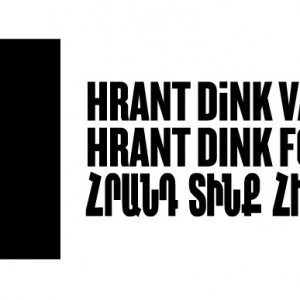5 May 2014
 A conference scheduled 22-23 November 2014 Istanbul.
A conference scheduled 22-23 November 2014 Istanbul.
With the establishment of nation-states, people who used to live side by side found themselves divided by international borders. These artificially drawn lines went through constant changes throughout centuries due to war, conflict and collapse of systems. The last century witnessed both the disappearing borders of Europe as well as the newly emerging borders with the fall of the Soviet Union. As borders were redrawn, peoples experienced mass migration, ethnic cleansing, demographic change, family separations, loss of property and living in isolation across closed borders in the patchwork of enclaves and exclaves, especially in the Caucasus.
In the process of the collapse of the Soviet Union, Turkey rediscovered its eastern neighbour Armenia. Even though Turkey recognized Armenia’s independence early on, it was reluctant to establish diplomatic relations. Except for a once a week passenger train between Leninakan/Gyumri and Kars, the borders between Armenia and Turkey were sealed during the Soviet period. In 1992 Turkey allowed the rail connection between the two countries to deliver European donated wheat to Armenia. In 1993 Turkey unilaterally and completely sealed its land border in response to the Nagorno-Karabakh War. Since then, the Kars-Gyumri trains are stopped, direct trade is disabled, and cross-border activities of local people are blocked. To this date, the policy of closed border remains.
The sealed border continues to have significant impact on the lives of societies and on the region at large. Its economic, social, environmental as well as political implications are visible everywhere. Moreover its impact is not limited to two neighbours but it affects the wider region as well. The sealed border did not help resolve the Nagorno-Karabakh deadlock; rather it further complicated that conflict.
This conference seeks to address the “policy of closed border” with its political, economic, social, environmental, humanitarian and regional aspects as well as the prospects for peace-building in the Caucasus. It particularly aims at addressing the following questions and issues.
- How does a sealed border and lack of direct contact impact mind-sets and daily lives of people in the border areas? In turn, what will be the impact of an open border on them?
- What will be the impact of an open border on economic development as catalyst for better standards, competitive production, interdependent economies and joint development? What are the missed opportunities and prospects for regional cooperation and integration? What will be the outlook of the region in 30 years time assuming there are open borders and possibly a common or free economic zone?
- How can the border influence regional integration and cooperation in the Caucasus? What has been the impact of ‘‘open-door policy’’ of Turkey with Georgia, Iraq, Syria and Nakhichivan? Can an open border act as catalyst for consolidating democracy in the Caucasus and its integration with Europe as a stable and secure energy and transportation hub, when it currently constitutes an unstable and insecure region rife with deadlocked disputes?
- What are we actually talking about when we talk about borders? What does it mean in terms of territoriality, citizenship, sovereignty, belonging, globalization, liberty, authority, ethnicity, nationality and identity?
- How do barbed wired borders affect the localities? What about architecture, transportation, urban and rural planning, municipalities, environment, migration?
- What is the impact of security-oriented border management on the social texture? What about governance, military troops, border guards?
- What are the social policy options and initiatives for sealed borders? Can football, festivals, cinema and visual arts, student exchanges play a role?
- What are the examples of crossing borders in language, literature and art? How is the border reproduced as a cultural phenomenon? How to cross borders?
Addressing such questions, among others, the conference seeks to contribute to cross-border dialogue on the missed opportunities and to promote efforts for initiatives that will eliminate barriers and will foster regional cooperation and integration.
The conference will be held in Istanbul. Working languages of the conference will be Armenian, English and Turkish.
In order to reserve time for Q&A sessions and discussions, each speaker will have 20 minutes for their presentation;
Transportation and accommodation expenses of participants from outside Istanbul will be covered if institutions they belong to cannot ensure coverage;
The conference is open to the participation of researchers working on the history, politics, economy, sociology, and demography of the region;
Those who would like to participate in this conference should submit a 250-word summary of their papers, along with a CV to the e-mail address below until May 15th 2014: eminekolivar@hrantdink.org
Papers presented during the conference will be published in the form of conference proceedings by the Hrant Dink Foundation Publications.
More information at: http://www.hrantdink.org/?Detail=933&Lang=en
Scientific Committee:
- Asaf Savaş Akat (Bilgi University, Turkey)
- Aleksander Iskandaryan (Caucasus Institute, Armenia)
- Zümrüt İmamoğlu (Bahçeşehir University, Turkey)
- Ahmet İnsel (Galatasaray University, Turkey)
- Raymond Kevorkian (Paris 8 University, France)
- Fuat Keyman (Sabancı University, Turkey)
- Gerard J. Libaridian (University of Michigan, retired, US)
- Neşe Özgen (Mimar Sinan University, Turkey)
- Volkan Vural (Turkish Industry and Business Association, Turkey)
- Thomas de Waal (Carnegie Endowment for International Peace, US)
Organization Committee:
- Cengiz Aktar
- Sibel Asna
- Burcu Becermen
- İbrahim Betil
- Delal Dink
- Etyen Mahçupyan
- Soli Özel
- Neşe Özgen
- Amberin Zaman
